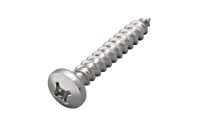What is an E-Cigarette?
E-cigarettes, including JUULs and other popular devices, use a battery to heat a liquid into an aerosol that users inhale. This liquid, called e-liquid or e-juice, usually contains nicotine, propylene glycol and flavorings.
Different flavouring chemicals in e-liquids have been shown to be cytotoxic when exposed to human cells. Some e-liquid flavours also contain volatile chemicals.
What is an e-cigarette?
An e-cigarette is a device that heats up liquid nicotine and flavouring to produce an aerosol, which users inhale. It’s also known as a vape, e-cig, or electronic nicotine delivery system (ENDS).
The most popular reusable e-cigarette is JUUL, which has a majority share of the e-cigarette market and inspired copycat products such as Suorin Drop, myblu, and Vuse Alto that use pre-filled pods to deliver high levels of nicotine. The popularity of these devices has raised concerns over the use of appealing flavours, which may attract new adolescent users and increase e-cigarette consumption [74].
In addition to nicotine, e-liquids usually contain propylene glycol and flavourings. These chemicals can cause irritation and lung damage. The heating process itself also forms decomposition compounds that are potentially toxic. Studies have shown that e-cigarettes can reduce the risk of smoking-related diseases by providing a safer alternative to combustible cigarettes. However, they have not been proven to be effective in helping smokers quit.
How do e-cigarettes work?
E-cigarettes use a battery to heat a liquid solution into an aerosol that can be inhaled. The vapor can contain nicotine, flavorings and other chemicals that may cause harm. It also may contain volatile carbonyls, which can have cytotoxic and neurobehavioral effects in humans and in zebrafish (Danio rerio).
Manufacturers of e-cigarettes advertise their products aggressively online, on YouTube and Twitter. They use a wide variety of flavors, including those that mimic popular food and candy brands, to appeal to youth.
E-cigarettes are often marketed as healthier alternatives to regular cigarettes, but studies have not demonstrated that they help smokers quit or prevent new onset of smoking. The wide variety of appealing flavors and high levels of nicotine present in many e-cigarette refills may draw new, nonsmoking users, putting them at risk for addiction. Also, recharging the device and spilling e-liquid can expose children to potentially toxic nicotine, which is not sold in child-safe containers.
What is the difference between vaping and smoking cigarettes?
There is a lot to learn about e-cigarettes and their impact on our health. It is important to know that vaping can lead to nicotine addiction and has negative health effects, including reduced lung function and an increased risk of certain cancers.
E-cigarettes (also known as JUULs and vape pens) use a battery to heat liquid into an aerosol that you inhale. This vapor contains nicotine, propylene glycol, and often flavourings and other chemicals. Studies have found that even e-cigarettes that claim to be nicotine-free contain trace amounts of this addictive chemical.
The vapours from e-cigarettes also contain a number of other substances that are toxic to human health, such as volatile organic compounds and formaldehyde. These are produced by the cigarette’s combustion and when heated by the e-cigarette. While many of these chemicals are classified as “generally recognised as safe” when eaten, inhaling them into your lungs is not a good idea. Long-term studies of vaping are needed to understand their full effects on our lungs and overall health.
How can I quit vaping?
Quitting vaping is a hard but important step to take. It may be helpful to find a support network and to create a plan for dealing with cravings and withdrawal symptoms. It’s also important to realize that it can take several attempts to quit for good.
Be sure to set a date to quit and stick to it. It’s also helpful to write down your reasons for quitting and keep them somewhere that you can see them often. You might want to consider Nicotine Replacement Therapy (NRT) products like patches, gum, lozenges, sprays or inhalers, which can help reduce nicotine withdrawal and cravings.
Be aware that the first few days can be challenging with cravings, anxiety, irritability, difficulty concentrating, restless sleep and mood changes. This is part of nicotine withdrawal, which many smokers and vapers experience all their lives. Avoiding people, places or things that trigger cravings may be helpful and learning how to deal with stress, like taking a walk, meditating, or drinking water can help.電子煙



